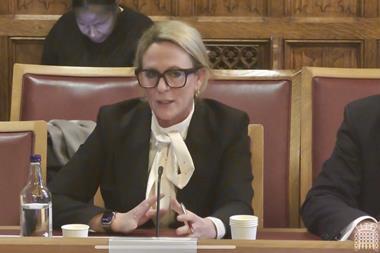Climate change is by no means a new phenomenon. Academics have swapped theories and theses for years, yet the rest of the world is only just beginning to stand up and listen.
Suddenly climate change has become a real buzz word and wherever you turn it is the subject of debate, research, conferences, television dramas and even concerts.
Insurance, too, is keen to tap into the current mania of climate change and, like the scholars, there is a palpable feeling that the industry can add real weight to the argument.
As Lloyd's chairman Lord Levene puts it: "At Lloyd's we feel the effects of the weather more than most, and spend much of our time thinking and preparing for it. We don't just live with risk – we have to pick up the pieces afterwards."
Last week the industry's charge went on as Lloyd's produced its latest report on climate change, pooling together the latest scientific thoughts on sea level rise, melting icecaps, flood and drought.
That was combined, perhaps more significantly, with the live launch of industry-funded risk group, the Lighthill Risk Network, which was initially set up in January 2006.
The events of the past two years have perhaps crystallised the responsibility of the insurance industry even more, but in opposing ways.
In 2005 the Lloyd's market incurred claims of $6bn after a record hurricane season. In 2006 that fell to just $100m after what was a remarkably benign season.
The contrast only highlights the encroaching influence of climate change on insurance risks.
With predictions that the wind is set to return in force this year when the hurricane season officially begins on 1 June, the need for greater focus on climate change seems to be an increasing priority for insurers.
The need for improved modelling and preparing now for the increased financial losses which climate change will bring is listed as one of the priorities for Lloyd's, as well as updating its risk management strategies to take greater account of climate change risk.
"It is vital that the business community has an accurate and balanced understanding which reflects the latest thinking on climate change but which avoids sensationalism," says Levene.
"More uncertainty means more risk, and calls for a fresh and flexible approach as tangible changes start to take hold within our lifetime."
The natural make-up of insurance means the impact of climate change is not something that can be dealt with in the long term, but something that must be factored in now, which is why the industry is perfectly placed to lead the charge.
Peter Taylor, project director of the Lighthill Risk Network, says: "We don't want another report on climate change in eight years' time, because policies only last for one year.
"We need to take an area of research and ask the academics to focus on our needs in our terms and with our horizons."
He insists that it is the industry that can act as a "regulator" of sorts, particularly in the area of emerging risks.
Taylor believes governments and society are not in a position to be aware of these risks quickly enough compared to insurers.
With little, if any, money spent on climate change research that specifically links into the insurance sector, industry figures have taken the lead through the network.
Guy Carpenter, Benfield, Catlin, Risk Management Solutions and most notably Lloyd's have partnered up to act as the central messenger between research councils and the insurance sector.
They are effectively creating a loop of information from one party to the other.
As large organisations can, they have stumped up money to fund the risk group, which aims to apply science to business and improve the assessment of risk.
But, even smaller insurance players can also get involved and do their part in the response to climate change.
It is at a cost, however, with the network subscription at around £10,000, but with cost comes opportunity and in a world preoccupied with the bottom line it won't take long for the insurance industry to seize on that, however small or large the individuals may be. IT
Hosted by comedian and actor Tom Allen, 34 Gold, 23 Silver and 22 Bronze awards were handed out across an amazing 34 categories recognising brilliance and innovation right across the breadth of UK general insurance.













































